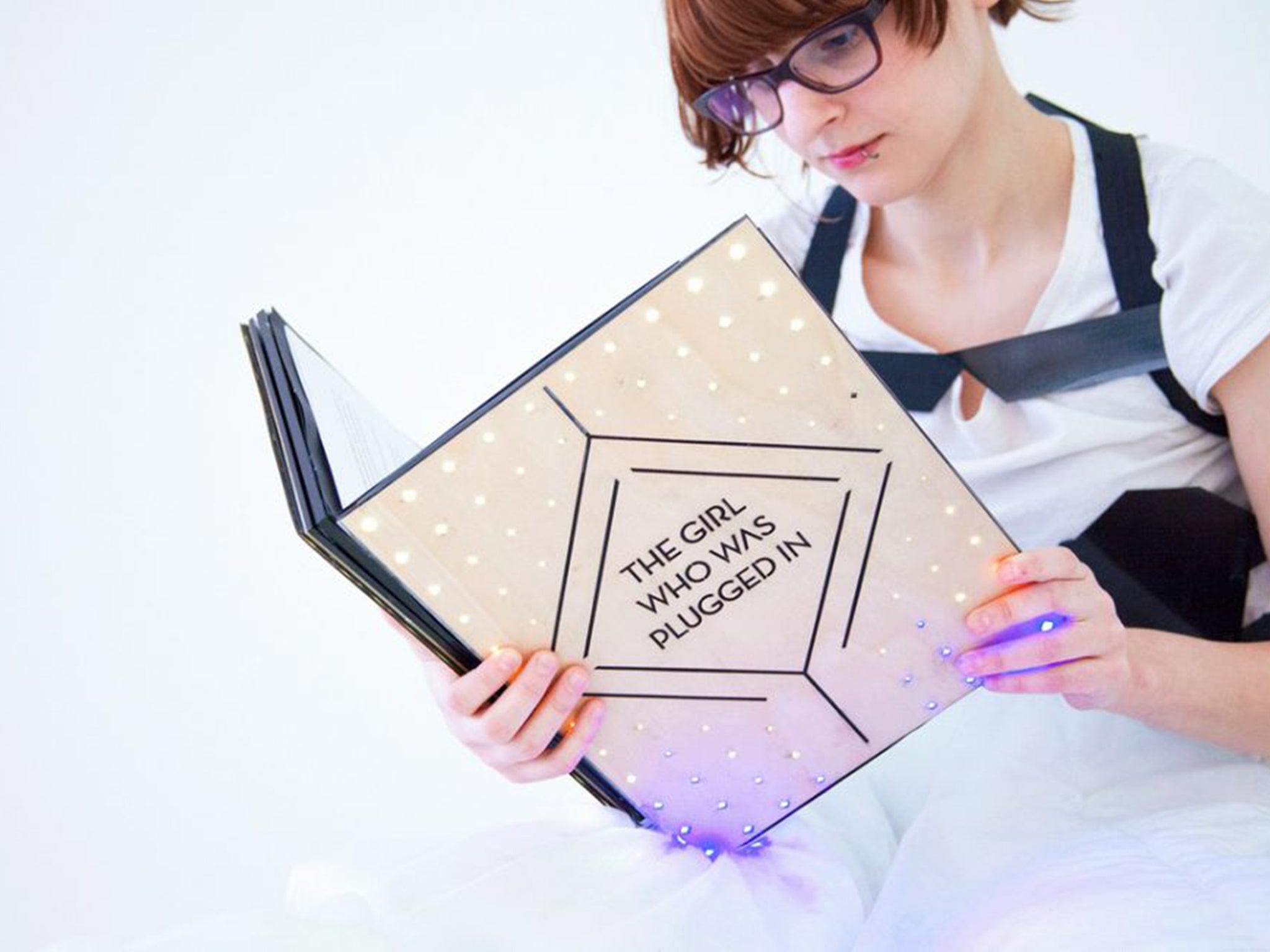'Wearable' books: The rise of sensory fiction
Every Wednesday, Alex Johnson delves into a unique collection of titles

We use all our senses when we read and now sensory fiction is starting to take off in a big, sometimes slightly smelly, way.
Talking books have a much longer history than most people imagine.
While children of the 1960s and 1970s will have fond memories of Johnny Morris reading the Thomas the Tank Engine stories on vinyl, Matt Rubery – audiobook historian, reader in 19th century literature at Queen Mary University of London, and author of The Untold Story of the Talking Book – has uncovered the first five books recorded by the Royal National Institute of Blind People in 1935.
Typhoon by Joseph Conrad
The Murder of Roger Ackroyd by Agatha Christie
The Gospel According to St John
The Story of San Michele by Axel Munthe
There’s Death in the Churchyard by William Gore
These are probably the oldest talking book recordings made in Britain.
Despite the cruelties of shellac, he is also making excellent progress in tracking down the remaining surviving recordings of each one.
You can hear the Gospel According to St John, read beautifully clearly by BBC announcer Stuart Hibberd, online at www.aeolian.org.uk/rnib.
Now, of course, they have become so much part of the mainstream that the Public Lending Right started making payments on audiobook titles borrowed in 2014-15.
Here were the 10 most borrowed in that period:
1. Without a Trace by Lesley Pearse, read by Emma Powell
2. Harry Potter and the Philosopher’s Stone by JK Rowling, read by Stephen Fry
3. Harry Potter and the Deathly Hallows by JK Rowling, read by Stephen Fry
4. Demon Dentist by David Walliams, read by David Walliams
5. The Cuckoo’s Calling by Robert Galbraith, read by Robert Glenister
6. Demon Dentist by David Walliams, read by David Walliams (a separate edition from number 4)
7. The Silkworm by Robert Galbraith, read by Robert Glenister
8. Never Go Back by Lee Child, read by Jeff Harding
9. Be Careful What You Wish For by Jeffrey Archer, read by Alex Jennings
10. Ratburger by David Walliams, read by David Walliams
The Massachusetts Institute of Technology has taken the idea of sensory fiction several stages further and offers a Science Fiction to Science Fabrication course.
Using a range of sensors and tools, part of the studies include building a wearable connected book contraption in the form of a strap-on vest.
This allows the reader to get fully in contact with the character’s emotions and physical states for a genuinely immersive reading experience.

Selected passages trigger vibrations to influence heart rate, and the temperature of the vest can be similarly adjusted (for example making it warmer if you are reading about a sunny day).
A compression element uses pressurised airbags to provide levels of constriction, and even the cover contains 150 LEDs which change appearance depending on what’s happening on the page.
The first story to be used with the book vest was, appropriately, The Girl Who Was Plugged In by James Tiptree Jr, the pen name of writer Alice Sheldon.
The course reading list features plenty of short stories, including those by Ursula K Le Guin, Stanislaw Lem and Elizabeth Bear as well as these novels:
Neuromancer by William Gibson
Kill Decision by Daniel Suarez
Diamond Age by Neal Stephensonn
Do Androids Dream of Electric Sheep? by Philip K Dick
Riders of the Purple Wage by Philip Jose Farmer

For a gentler, more nose-centric experience, the discerning booklover is also now able to buy fragrances to augment their reading sessions.
But this is no clunky “scratch and sniff” solution. Paperback cologne spray from Demeter claims to be “sweet and lovely with just a touch of the musty smell of aged paper … it harnesses that scent with a sprinkling of violets and a dash of tasteful potpourri”.
It claims to smell just like your favourite secondhand bookshop. Or maybe try Paper Passion Perfume, which says it “captures the unique bouquet of freshly printed books”.
A collaboration between perfumer Geza Schoen, publisher Gerhard Steidl and Wallpaper magazine, it “expresses that peculiar mix of paper and ink which gives a book its unmistakable aroma, along with the fresh scent which a book opened for the first time releases”.
Or maybe invest in a candle. Paddywax’s Library Candle series does not drill down to individual book titles but does supply you with around half a dozen writers including Edgar Allan Poe, Jane Austen, Charles Dickens, Mark Twain, Ralph Waldo Emerson and John Steinbeck.
The Leo Tolstoy is its signature soy wax offering, featuring black plum, persimmon and oakmoss fragrance notes.
Similarly, Frostbeard Studio’s selection includes Gatsby’s Mansion, Cliffs of Insanity and Don’t Panic (Fresh Towel).
Its Shire candle – oakmoss, clover, aloe and a hint of pipe tobacco – is the “One candle you need by your side when embarking on an epic adventure”.
And if all other senses fail, for your taste buds, there’s cake in the form of the annual International Edible Book Festival. With events around the world taking place on 1 April each year (but it’s not an April Fool’s joke, honest), there’s bound to be something delicious near you, such as a Life of Pi.
‘A Book of Book Lists’ by Alex Johnson, £7.99, British Library Publishing
Join our commenting forum
Join thought-provoking conversations, follow other Independent readers and see their replies
Comments